Episode 55 : Fiddleblack’s Jason Cook, Cabal and Other Annotations
Special guest on episode 55 is Jason Cook of Flddleblack. Fiddleblack.org is the publisher for the limited numbered Clive Barker Cabal and Other Annotations book. Hosted by Ryan Danhauser and Jose Leitao, we also cover a lot of Clive Barker news before and after the podcast. [Click the Link for Show Notes]
News
1) Crazyface production. Coming soon in August 2014! Crazyface, performed with special permission by Clive Barker. Brainspunk Theater https://www.facebook.com/brainspunktheater?directed_target_id=0
2) Miss Kitty’s 13th Annual Halloween Ball with Clive Barker
Transcript Below:
DANHAUSER: Good morning! As I record this, it’s about seven o’clock in the morning on the 26th of October, 2013. So this one that you’ll be hearing here is episode 55 and we talked with Jason Cook of Fiddleblack publishing. if you don’t know, they did Cabal and other annotations. So this was an edition of Cabal that had about five introductions; Peter H. Gilmore from the Satanic Church, Phil and Sarah Stokes (who are Clive Barker’s archivists and run the official Clive Barker website, CliveBarker.Info), John Mcmanus (who I must admit, I don’t know who that is) Nicholas Vince (who played the Chatterer and Kinski in Nightbreed) and then Mark Miller (who is the vice president of Saraphim Films and began the quest to reinstate Nightbreed). You could say he’s the sort of the grandfather of Occupy Midian. And then there’s a whole bunch of annotations at the end — people analyzing the different lines in the novel. So it’s a really cool book and it’s got all the illustrations — the inkblot Rorschach type paintings that were in the UK edition that we in the United States didn’t get. So really cool edition, limited to only 300. As we’re recording this, there are still some available.
DANHAUSER: So recently you just released Clive Barker’s Cabal and Other Annotations.
COOK: That’s correct. It came out in September and I do appreciate you guys including it in the recent podcast episode. I had a chance to listen to that and it was really cool.
LEITAO: I have the copy number 84. It’s a really beautiful book. I’m still experiencing the book. I’m still reading all the detail that’s included in it — all the annotations. Very, very detailed stuff. So this was announced back in June 22nd of 2012 if I’m not mistaken.
COOK: That’s correct. We put something out on Fearnet. They had the exclusive and it kind of trickled out from there to Phil and Sarah — and I guess the regular Barker camp.
DANHAUSER: And how did this come about that you decided to start working on this project?
COOK: It actually began quite a bit earlier, obviously. It began in 2011. I had the idea of doing something along these lines. And by that I mean taking a horror writer and kind of cobbling something around a really great work. To me, Barker’s always been a huge influence, and who I think of when I think of horror. I reached out to his agent around this time of year and that’s really when it all got started.
DANHAUSER: So were there any issues with who’s currently got publishing rights on Cabal?
COOK: No issues really. It was more just a very long business process. It was me talking with his agent and there was a period where she was vetting Fiddleblack as a publisher. And then it was me communicating and speaking with a representative — a pocket books representative at Simon & Schuster. I guess somewhat of an interview process. And from there I imagine it went to Mark Miller over at Seraphim. And that’s where I think everything began to take shape. But it was a pretty long process. I live in Cleveland and everything sort of like us is out of Cleveland. So we’re a bit removed from the Manhattan publishing world, but when I started talking to Clive’s agent — approaching Thanksgiving of 2011, as you can probably imagine everybody seemed to have vacated New York City at that point and just left their email accounts unattended. So just a lot of email back and forth probably until March of the next year, and that’s when finally I was talking to Mark and shortly thereafter we did the press release.
LEITAO: So here’s the important question, are there still copies left? Can people still get this wonderful book?
COOK: Absolutely. We actually did an email the other night, the last 100, so we have about a hundred copies left. There’s been some talk of some of them going over to the Real Clive Barker store. And I don’t know where that’s going to go. I spoke to Mark about it and he was pretty interested. He said, let’s see how everything goes. And I haven’t really brought up the issue since, but I’d imagine we would probably be sending 25 out that way. Last I checked, at the Barker store that’s where he’s signing books and things like that. So there are opportunities on two different fronts like us to get the book. It’s still definitely available.
LEITAO: Really, really cool idea. Especially because, like you mentioned, sometimes Clive will sign some books that would make them even more attractive.
DANHAUSER: I’d been meaning to ask… So mine is number of 92 out of 300 and then it says F underneath. What does the letter stand for?
COOK: The F is there signifying that’s the Fiddleblack F, indicating we numbered it. Not somebody else with a silver sharpie who would happen to have a blank copy.
DANHAUSER: I see. Okay. Gotcha.
COOK: Someone else asked me that recently and I probably should have stated to people purchasing, but yes, everyone has the F and everyone has X out of 300 except for the folks at Simon & Schuster.
LEITAO: Right. So how did you guys approach the contributors for this? Of course, some of them are naturals to be included like Mark Miller and Nicholas Vince. But I was looking at some early, early announcements for this book and I think this might’ve been on fearnet or some other website. It was also announced among the names Daniel Chichester, a writer from marvel comics and very involved in other Clive Barker books — comic books like Hellraiser and Nightbreed. So he didn’t make it, right? I mean, but you guys at some point tried contacting him for this?
COOK: Yeah, that’s actually a really good question. He was one of the first people that I reached out to actually, in addition to Clive. I’m sure you guys have different pockets of the Barkerverse that appeal to you outside of Barker. But his work with the Nightbreed series and the Hellraiser series and particularly, it was two books where they came together with the two Jihad prestige books. Those were a tremendous thing to me when, when I first read them. And, and so he was always in the back of my mind. If this book ever came to light in those, those months in 2011, when it was just hoping that we could get everything to line up and go through, he was definitely at the front of my mind as somebody who would have to contribute to the book. And I did speak with him, I think twice. I think we talked a couple of times. And just talked about Clive and then I talked about the project and he was completely interested and he made several commitments to me. So much so that I let him know, ‘Hey, we’re doing this press release and I just want to make sure that everybody who I think is involved is actually going to be involved’. And he approved that and then somewhere thereafter, I didn’t hear from him again. I never really got a reason why. I sent a few emails just saying, ‘Hey, you know, it’s no big deal if you can’t still contribute let me know’, but I didn’t hear back, so I’m not sure.
LEITAO: That’s a shame. I Would’ve loved to read something about him, about Cabal, that would have been definitely interesting. But we do have a bunch of interesting people here as well. I’m reading some of the notes from a new Eugene Thacker — very interesting stuff. I especially enjoy the fact that you guys added at the end of the book, those little illustrations that were made by Clive Barker.
DANHAUSER: Especially for people in the United States that didn’t get those in the hardcover first edition.
LEITAO: Exactly. I was familiar with these in my UK books, these little paintings that Clive Barker did — the ink blots and here you got them all. So that’s a lovely appendix.
COOK: Thank you for noticing that. That was partially Mark’s idea. It had always been something that would extend Cabal because to me it’s not that fun to release something that’s exactly the same… doesn’t have any extras so to speak. So it’s really nice to say that because I wanted to include as many things as I could that would really represent the whole aesthetic of Cabal. If we could have put the old marvel sketches or something like that in there I definitely would have, but it was really tremendous to have the option to include those — for Clive to loan them to us and for the tracings and everything to work out nicely on the page.
DANHAUSER: And how did you come to get Peter H. Gilmore to do his introduction?
COOK: I had been communicating with him on and off for a few months before the book started. He’s always been an enigmatic figure. I always thought it would just be really cool to hear him talk about anything like this. I read some of his essays, and from a philosophical perspective he tends to be one of those living philosopher types who’s not necessarily someone who goes out and speaks on an intellectual level. He’s more someone to me who really has a connection with what he’s saying. And there’s not too much analysis there. And that was really attractive and so we’d gotten to talking and I know he did some work — Horrorzines in the eighties. He was working on one and I think he came to meet Clive through the ‘zine at a convention or something like that. And so he had that personal connection where to him Clive wasn’t just a horror figure, but he was also someone who had influenced him creatively.
LEITAO: I would like to take a moment here to just mentioned the type in the book, which I was just reading at the end, that it was a typeface called electric created in 35. I have to say, while I was reading it, I noticed two things: One, that the type, it seemed to be like an older kind of type in some way. Aesthetically it seemed to be older as if this was an older book that I had picked up and read. And the second thing is that the ink that you guys use to print the book is a little shiny, isn’t it? I mean, it’s almost like you can see a little bit of a sheen coming from the type that was very, very interesting.
COOK: It’s really a good topic. I think. Electra — and again, I’ll have kind of fudge my way through a typography explanation here — It’s really a design type. It’s something I think that’s been traditionally used to for magazines and things like that to sort of showcase copy and, and not so much long-read texts, like things like Minion or Georgia that I think people probably traditionally see. My idea with the whole book was to take something that was normally relegated to the mass-market paperback where the font size is so incredibly small and to deviate from that as much as possible. So I did try to put a decent amount of thought into the typography and do something that was aesthetically pleasing and different without being taxing to read. From what I’d read in my research Electra was something that walked the lines there. And I think in the past with letterpress and offset printing, it can be a difficult font to read and with technology and in the way publishing is today, it’s a lot easier on the eyes. So that was my thought.
LEITAO: For me typography is important because I used to be an old book-seller for a while. So I’m from Portugal. Of course, now I live in California, but I used to get all sorts of books from like the 18th, 17th century, which some of them are like German and French and printed in Paris, printed in Munich. So I do tend to pay attention to the typeface of the books when I’m reading them. I thought this one, aesthetically, it was very interesting. In some parts it looks almost like an old book because some letters kind of look — you can see that little smudge around the letter sometimes. It feels like an old pressing font. So that was interesting. I just thought I would bring this one up because I’m interested in this.
COOK: Yeah, that’s really awesome. That was one of those things where I felt that there was enough thought given to that decision that it should be mentioned. So I think that’s definitely a good thing. I hope that’s something that reaches other readers.
LEITAO: The presentation is beautiful, the book is cloth-bound. It comes with a dust jacket. And for you people out there considering buying the book, you will be very pleasantly surprised when you open up the box because the book comes bound in a black paper with black ribbon, which was a really nice touch. I really have to say that. I’ve made a unboxing video when I got my copy, which I tweeted on Youtube and I guess you retweeted it on Fiddleblack’s Twitter account.
COOK: I did, that was amazing. That was there was really, really nice and it was really a sweet thing to do. Thank you for doing that.
LEITAO: Oh yeah, that was my pleasure. I was very impressed when I opened up the package and saw the presentation. That was beautiful.
DANHAUSER: I also liked that the cover is a Clive barker illustration and that it’s a kind of a matte finish, instead of a glossy finish.
COOK: Yeah. It is his illustration, Like the illustrations you see in the back, in the beastiary area. Mark and Clive told me to take a look at the catalog — his artwork catalog — and see if anything interested me for the book because he really wanted to use something of his in the cover design and so it was actually a pretty long process.
DANHAUSER: Oh, so did you visit their office in California?
COOK: No, digitally everything was traded, but actually the archive — I think it’s in London. I think it’s with Phil and Sarah Stokes, cause they kind of had the gatekeeper access to all of that — all the files. Or if I needed a photo, they were the ones that would be able to provide that. And so we collaborated a little bit on the cover and they sent over an iPhone photo of something that Clive had in California. And I thought it was a perfect suggestion. And so I took that and we did a tracing from there and just kind of modified it with the symbol as a nod to the text and all that.
LEITAO: I saw there was a photo that was posted on Mark Miller’s Instagram accounts or maybe it was the, the Fiddleblack Twitter account, that you guys had a little prototype of the book — early design.
COOK: That was part of the concepting phase — to get everybody interested in the idea ’cause there’s so many people involved and so many approvals required, I created a physical mock up just to help tell the story. It’s not just a proposal, it’s a real thing. And so that was some opening artwork that I started with that didn’t make the cut. But I think the direction we ultimately went in was definitely the best one.
LEITAO: We will add that picture to the show notes on the blog if that’s okay. So Fiddleblack started out as a literary magazine, Right?
COOK: That’s correct. It hasn’t changed too much. We’ve been on a pretty lateral evolution. We became an online literary magazine, like you said, we started with taking creative writing submissions from people in this small press circle where mainly graduate students and professional writers contribute fiction. At the time we were looking at nonfiction and poetry and collecting that. Initially it was exclusively online, so we would take people’s writings and organize them into issues. They were just groupings of different submissions that we labeled — this is issue one. I think the first issue might’ve had like 10 (quite a lot) pieces in it. We adopted a release schedule from there. ‘Here is an issue’ and if we have an audience here and, and we’re slowly developing this — this is the aesthetic that we want to convey. We thought, ‘Well, why not? Why not go to print?”
LEITAO: Absolutely. And you guys also have like a podcast with author readings on it?
COOK: Yeah.
LEITAO: We’ll add links to the interview if that’s okay. So it’s fiddleblack.org Correct?
COOK: That’s correct. Yes. Fiddleblack
DANHAUSER: For some reason we originally, Jose and I both kept reading it as Fiddleback and we kept leaving that second ‘L’ out. . Where did the name come from?
COOK: It really has no direct origin. I was in Maine when I was thinking about this whole thing and starting Fiddleblack itself and my family has a home up there near Saddleback mountain. And so I was looking at Saddleback and thinking ‘I want to do this creative project and it’s got to have a good name. I have to think of a name. And so I put tremendous pressure on myself to try and think of something that I thought was really concise and really had an impact but wasn’t too trendy or anything like that. Thinking back, I guess I have to attribute it to maybe me having Saddleback mountain in my mind and the tone of — both of the words are kind of similar. And so I think it probably evolved from there.
LEITAO: I was looking up my homework for this interview and I saw another interview that you had done where someone asks you like six questions at the end. They asked what was the question you would like me to ask you that I didn’t? So I’m going to ask you that question now, which is, Where do you see Fiddleblack going in the next five years?
COOK: That’s excellent. I think in the next five years, I’d really like to do several more of these types of projects. We have another one that’s in the works now. I can’t say too much about it, but do you guys know Larry Fessenden — Glass Eye Pix? He did The Wendigo. I think it came out in 2001, and he’s worked with Ti West. His production company did a bunch of Ti West films.
LEITAO: Yeah, I think I may have seen the movie.
COOK: It’s really cool. it’s a different take on that.
LEITAO: He directed it, right?
COOK: Yes, that’s correct. I think in the next five years I just want to keep looking at these passion projects like the Barker book or something similar. And repeating. I think that’s really where we can really bring something to people that they’ll enjoy, and without having to sacrifice any on attention or quality or anything like that.
DANHAUSER: So with Cabal, when those 300 copies are sold, will there be another printing — like a paperback? Or is that it, is that just 300 copies? It’s done.
COOK: That is it. It’s after the 300 copies it is 100% done.
DANHAUSER: Okay. And, and how is Simon and Schuster involved?
COOK: Yes. Technically the Pocket Books division, but the Simon and Schuster is the copyright holder there.
DANHAUSER: Oh, Gotcha. Okay.
LEITAO: It’s amazing because before we called you, we were talking about news about Clive Barker. We were talking about how the Scarlet Gospels, which is going to be one of the upcoming books from Clive Barker — the rights to publish. It had been auctioned. And it turned out that Saint Martins Press is going to publish that book. So it’s interesting that nowadays we’re seeing the dynamic change from some bigger publishing companies to some smaller publishing companies. And even though people claim that physical books are dying off, the luxury deluxe editions are still a thing. And more than ever.
COOK: Yeah. And thankfully so. In publishing, just like in other creative avenues like music for instance. It’s easier now than ever for people to communicate and have access to things. And just in the instance of looking at artwork and all of the materials — the paintings and things that Clive had created. It’s so easy now for me, how I was able to communicate with Phil and Sara Stokes; and how Mark Miller was able to send me an iPhone picture of something in California, there’s just so much accessibility. And so I think people are looking at how they can lend their talents to things that used to have very big pay walls, for lack of a better term. It was always very difficult to even speak to a publishing company or to a rights-holder and… I mean just look at Occupy Midian and the whole Cabal Cut thing and how Mark was able to get his hands on that and to take it where, where it is. It’s really exciting. I think it brings us new creative materials, It gives us more content and at the same time. I know you guys were talking about this book and how it had suddenly just kind of appeared a few months ago. There’s so much out there and I’m thinking in some way that’s probably to a fault.
DANHAUSER: Well, we had remembered there was the announcement over a year ago and then everybody was excited about it. And what we’re used to with special edition books is that you preorder it and then like a year later it arrives and in this case it was like, ‘okay, now here it is. You can buy it and we’ll ship it to you.’ And we’re like, whoa!
LEITAO: The trailer was what put it back in my mind again on Vimeo and on Youtube. And I was like, ‘Oh yes, this book is coming out’. So, I got the number 84 copy. So that was really cool. Thank you so much for this. it really is a beautiful book. I’m looking forward to hearing that it’s finally out of print.
COOK: Hopefully soon. At the rate it’s been going, it won’t be long before the 300 are all locked in and everybody has their final copy.
DANHAUSER: And this is for somebody who loves books. Obviously an eBook version of this wouldn’t have the same effect.
COOK: I did think about that. I did talk to Clive’s agent about it briefly, only because there’s the initial thought of, ‘well, these other people are involved and they’re putting a lot of work into writing something that essentially 300 some people will read.’ But I really think it’s important to have the object and have something that you can touch and feel and, and to me the exclusivity of it was really important. And I think Mark ended up feeling that way as well. So I’m really glad that is 300 and it’s done. I really think that that makes it the most special for everyone who’s had a chance or who will have a chance to pick up a copy.
DANHAUSER: So for listeners out there, you still have a chance to buy this, but I would jump on it now.
COOK: Yeah, they, go pretty steadily. It’s available. So that’s Fiddleblack.org. You can shoot us an email if that’s easier, but just let us know. The last 100 are leaving.
LEITAO: It’s really been a pleasure. Thank you very much for allowing us to have this little chat, and have a chance to thank you guys, everyone in Fiddleblack, for the book because it’s really amazing.
COOK: Thank you guys so much for having me on and for even mentioning it in the first place on the other episode. It was really nice speaking with you and having a chance to just tell the story.
DANHAUSER: Oh and off the record, I want to apologize for Brandy calling you up and yelling at you. She’s like, “So Ryan, did you get yours yet?” I said, ‘no.’ And she’s like, “That’s it. I’m calling.”
COOK: You can keep it in the record. It was Mark basically said ‘Well get ready’. And it was a lot at once. So I apologize profusely to Brandy and these are moving quickly. And to the unboxing video as orders were being boxed I saw the unboxing video for the first time and there’s this strange sense of completion and with the Harry Potter type music that was playing and just seeing it slowly unraveled as stacks of them were being wrapped. It was a very surreal moment. So that was… that was really cool.
LEITAO: It was beautiful. There was that beautiful book wrapped in black paper and all of a sudden I grabbed my wife’s pink scissors and I opened it up. So someone actually commented on Youtube, ‘Oh man, I love your pink scissors!’ I’m like, ‘Uh-Oh…’ That’s just the way it is. Yeah. So thank you again and thanks to everyone at Fiddleblack.org.
COOK: My pleasure. Thank you so much.
LEITAO: All right. Well thank you. Okay. That was, that was great. Thank you. I thank you for your time, Ryan, you didn’t have any other questions, right?
DANHAUSER: I don’t think so. Yeah. Thanks so much.
LEITAO: All right. Looking forward to talking to you again sometime if you guys do come up with other Clive Barker books, that I might end up buying, you know? ‘Cause now I’ve got my eye on you.
COOK: Let’s definitely keep in touch. I do like the podcast and I love the talk about the old Marvel Pinhead comics in the other episode.
LEITAO: Oh Gosh. You listened to that?
DANHAUSER: Yeah, we went on way too long about those.
COOK: Mayan Pinhead was an amazing thing and it’s an image that has always stuck with me. So that was really cool to kind of go back to that.
LEITAO: Ryan, didn’t we have one question from our listeners?
DANHAUSER: Yeah, Roger had a question and it was kind of covered already. He said, “I love the book. I’m still reading through the annotations, but everything so far is wonderful. I’m curious about the reflective quality of the ink and paper used. Do they have plans to put out any other Clive Barker related books?”
COOK: None as of yet. I would definitely bring it up if we had a new projects and insight, but um no plans as of yet. It’s kind of tricky to hone in on parts of his catalog. But I’d love to do one in the future.
DANHAUSER: And the shorter horror novels, like The Hellbound Heart just got a 25th anniversary special edition hardcover.
COOK: We would even be interested in picking out stories and collecting two or three stories in a single book accompanied by additional annotations and extra content that really focuses and give love to just a few stories rather than the whole Books Of Blood, or Something cumbersome like that.
DANHAUSER: It seems like one that gets the most talked about is, “In The Hills, The Cities”.
COOK: That’s a good story.
LEITAO: And a final detail here is that I am pretty sure that this is the first and only annotated edition of a Clive Barker book so far, so that, that’s really interesting.
DANHAUSER: Yeah, that’s, true.
COOK: As far as I know, hopefully it is. It was when they had the idea and coming from Fiddleblack being more of a literary thing and more I guess, the snobbier sort of writing for lack of a better descriptor there. I’m a big Cormac McCarthy fan and so a lot of his books get the academic attention that I think Clive Barker’s work should get. And I had a lot of these academic texts that just solely concentrated on Cormac McCarthy and there are whole chapters devoted to single pages. And to me that’s such a cool thing. You know, I’ve read the books. So what else can I read about them? And here they have these professors who put so much time into explaining and researching and really tracing every single sentence. And I think that’s something that Clive needs and should be brought to his work.
LEITAO: If you like that kind of stuff — that kind of analysis. I would like to recommend here, for you and our listeners, Gary Hoppenstand’s book Clive Barker’s short stories: Imagination As Metaphor In the Books of Blood and Other Works. It’s a very interesting in-depth analysis book.
COOK: I’ll have to check that out. I haven’t read that one.
LEITAO: Yeah, it was published in 1994 by Mcfarland & Company. And the name is Gary Hoppenstand with two P’s. So it’s definitely something to look into. I love this book.
COOK: Okay, excellent. That’s a good recommendation. I will track that down.
LEITAO: All right, well thanks again Jason for your time and, looking forward to seeing what Fiddleblack comes up with in the future.

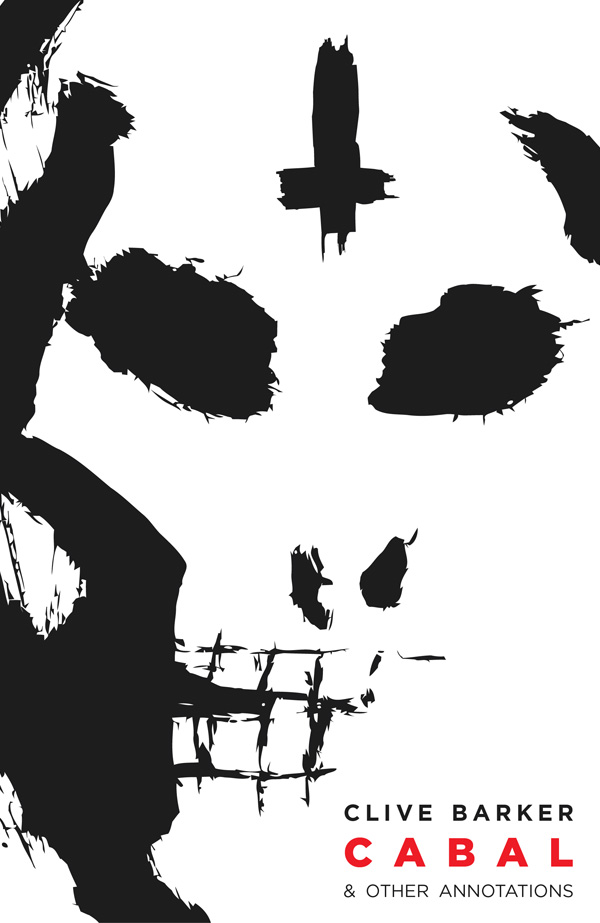
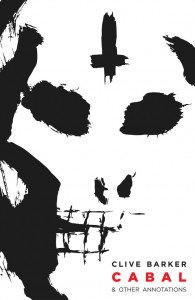

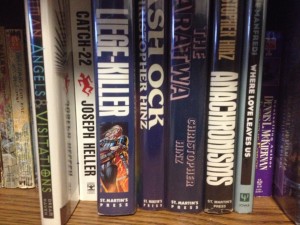
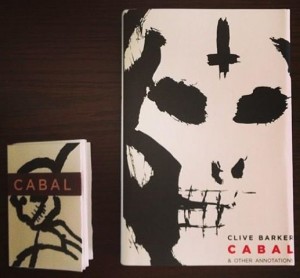
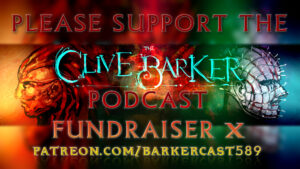


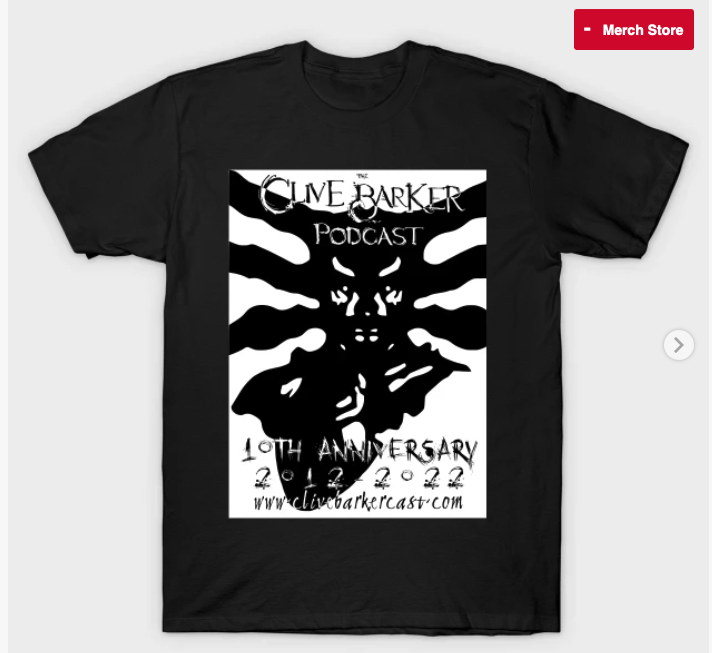

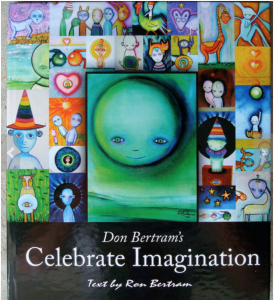




















I’m really enjoying this beautiful book. I’m glad you got to do an interview with Jason Cook of Flddleblack about it and how it came to be.
LOTS of cool Clive news too! Another great listen.
Leige-Killer FTW!
Reemul dropped an atomic bomb on a city just to kill one guy!
[…] Episode 55 : Fiddleblack’s Jason Cook, Cabal and Other Annotations […]